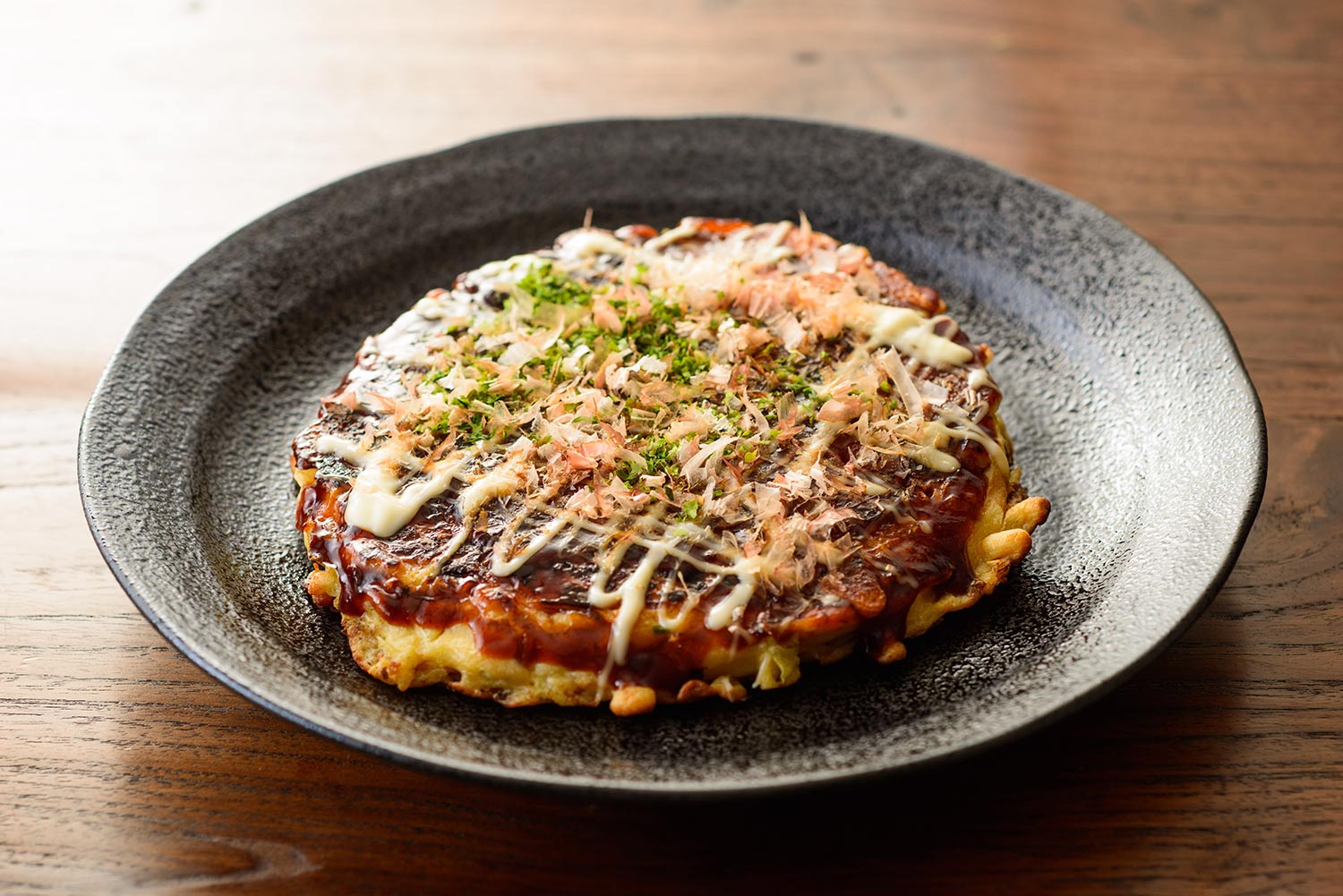

OKONOMIYAKI – JAPANESE PIZZA, OR FRY WHAT YOU LIKE
As can be observed in the case of many other national cuisines, the Japanese cooking art kept evolving over ages, adapting not only to the tastes of the people but also to the changing social and economic conditions in the country. During the war crisis, when Japan lacked even the traditional rice, the islanders were forced to modify their customary menu and take a creative approach to the currently available products. This is how the recipe or idea for okonomiyaki – Japanese pizza – came to be.
Okonomiyaki – what is it?
Okonomiyaki means literally simply “fry what you like.” As the name suggests, it is hard to speak about a specific recipe for the Asian equivalent of the Italian classic. The dish is based on a flour pancake fried on a pan or a preheated metal plate, with various additions on top. The universal nature of the dish, made of generally available flour and eggs, proved excellent in a time of crisis, and due to the virtually unlimited modification possibilities, the recipe – just like the Italian pizza – became a regular part of the national menu. Japanese cities offer various versions of the dish – okonomiyaki with vegetables, beef, okonomiyaki with chicken, seafood, and even noodles.
How to make okonomiyaki
In principle, there are two ways to make okonomiyaki, each characteristic of a different region of Japan. In both cases, the batter is made of either wheat flour or nagaimo root flour, eggs and water. In the version coming from the area of Osaka, the remaining ingredients – finely chopped cabbage, onion, meat, seafood, any vegetables or cheese – are added directly to the batter, which is only fried on a pre-heated pan or metal sheet once everything is mixed together. The dish is sometimes referred to as “ Osaka Soul Food”, alluding to the common term for the menu of poor inhabitants of Latin America. And how is okonomiyaki made in Hiroshima? Subsequent ingredients are layered on a pre-fried pancake. Before being served, whatever the version, the dish is sprinkled over with aonori – chopped nori and katsuobushi, and poured over with Japanese mayonnaise and special, slightly sweetish sauce.
The iconic okonomiyaki sauce
Just as Italian pizza cannot be served without the traditional olive oil, okonomiyaki cannot appear on a Japanese table without the now iconic Otafuku sauce. Its history dates back to the 1950s, when one Hiroshima fried food stand started to serve Japanese pizza with an addition of ginger Worcestershire sauce. Unfortunately, the too loose topping would flow down the dish so the owner started to work on his own sauce recipe. Today, the Otafuku factory daily releases over 200,000 of okonomiyaki sauce bottles a day, and to keep the demand at an appropriate level, it organises seminars and classes for Japanese pizza masters, chefs who want to serve okonomiyaki in their own establishments, and workshops for children and cooking lovers. The company also initiated the founding of the okonomiyaki museum, which is an educational centre commemorating the tragic attack on Hiroshima.
According to Otafuku’s statistics, there are now over a dozen thousand restaurants serving okonomiyaki all over Japan. During the seminars, the manufacturer of the famous sauce encourages the participants to create unique versions of the dish, for example using local products. After all, diversity and uniqueness of dishes may win the restaurant owners the interest of customers and a stable market position.
There is a reason why okonomiyaki is compared to Italian pizza. They share not only similar appearance and ingredients but also similar history, which does not start in dining rooms of the aristocracy but in tiny kitchens of simple people forced to culinary creativity by the difficult situation in the country and by poverty.























